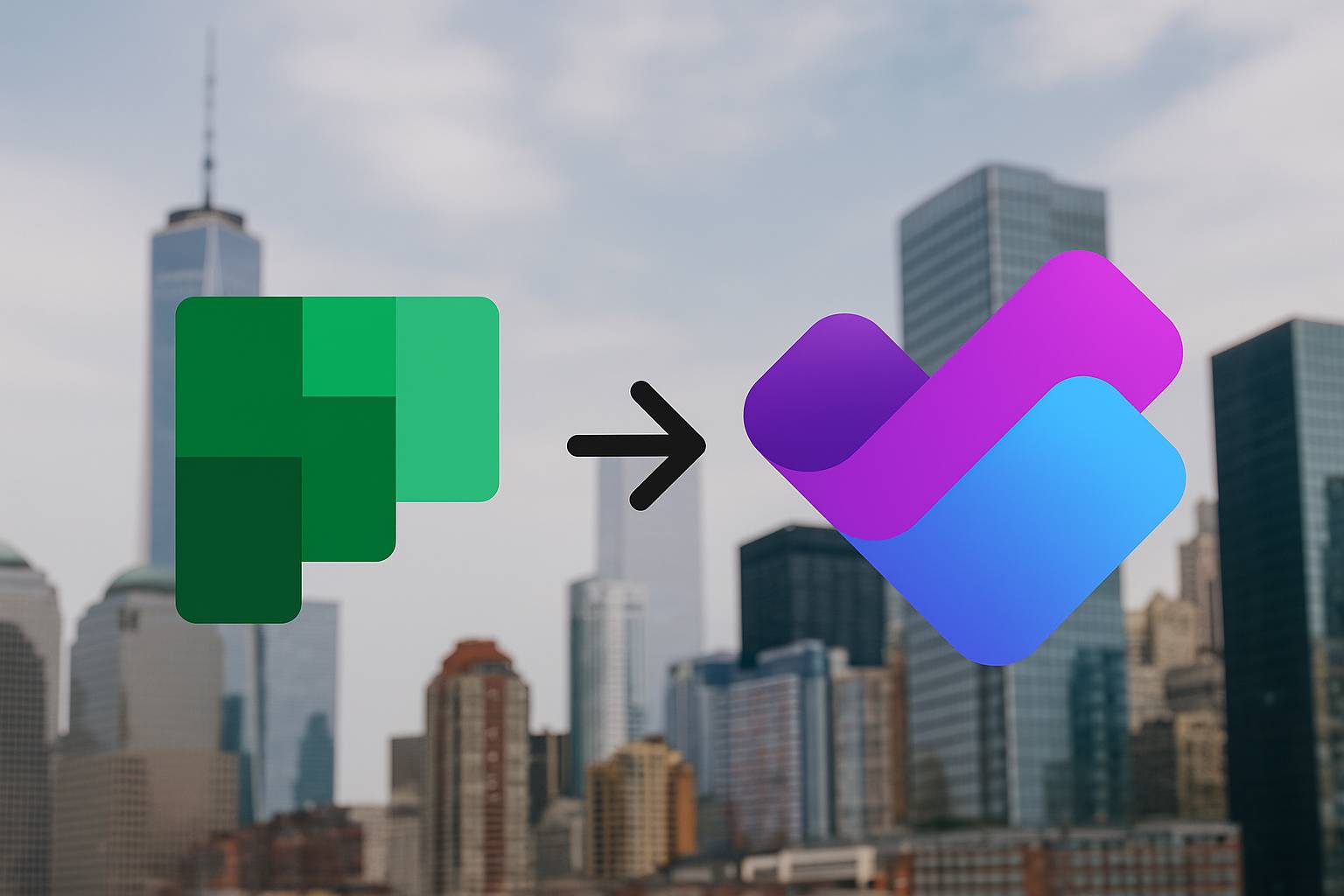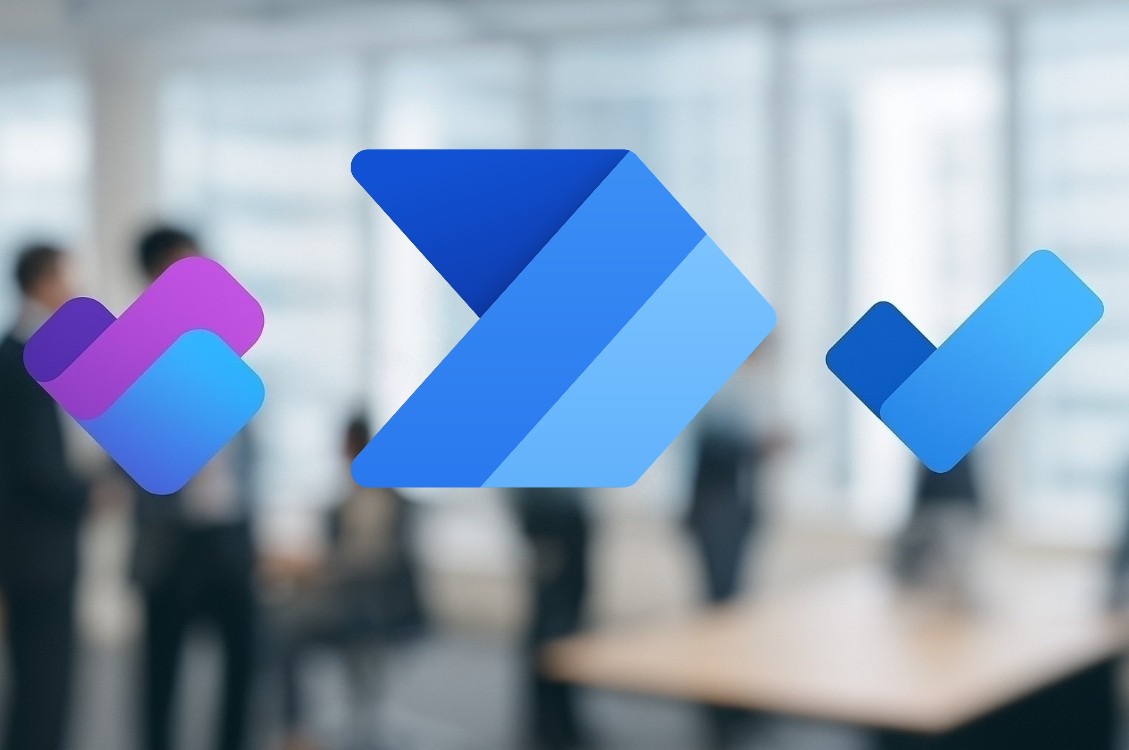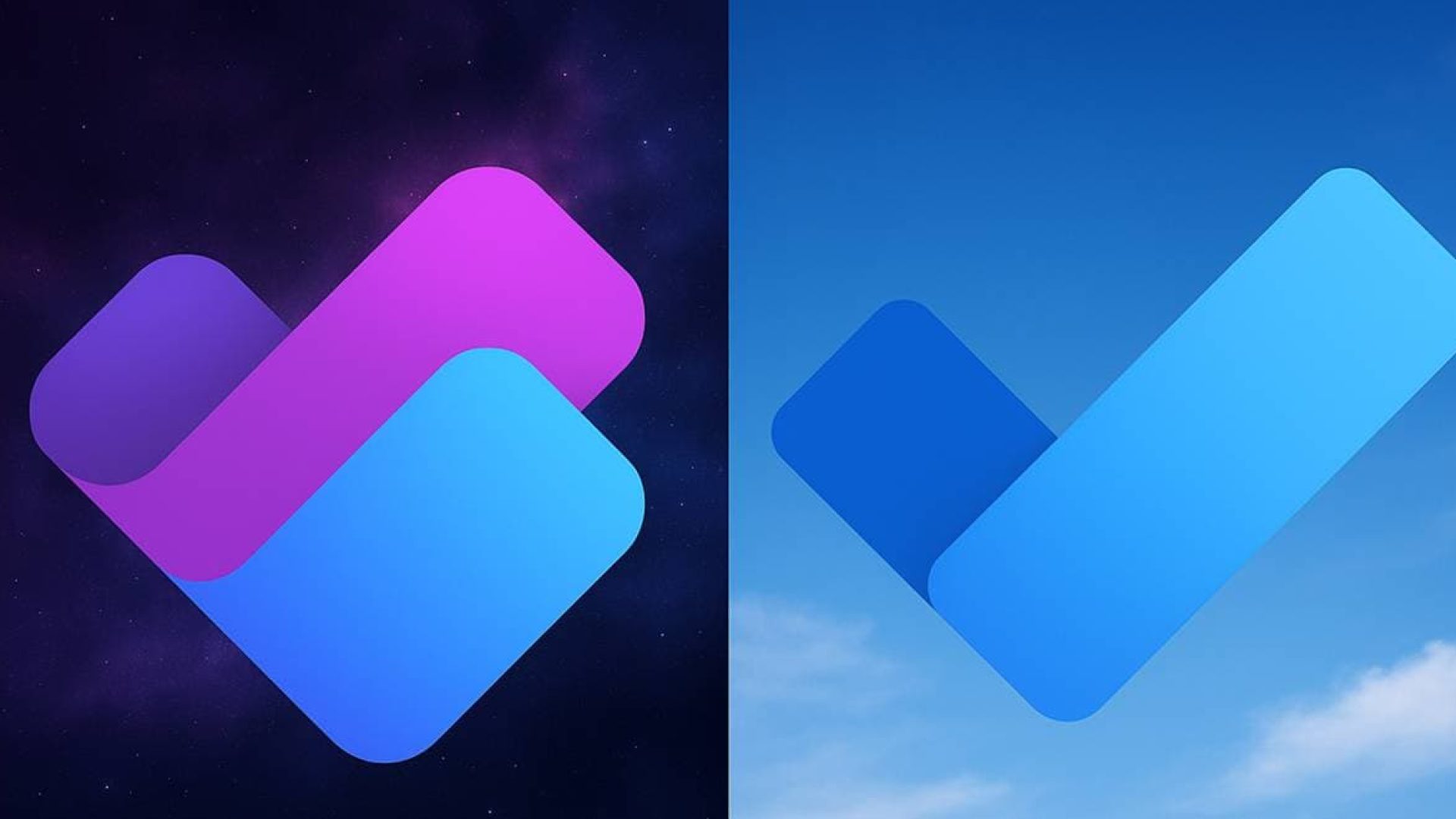Task management is the foundation of efficient work – whether you're a solopreneur, a multi-person team, or a larger office. Without a system that allows you to track what's been done, what needs to be done today, and what can be delegated, chaos, missed deadlines, and stress can easily result.
In the world of Microsoft 365, we have two very popular tools at our disposal: Microsoft To Do and PlannerBoth are available in Microsoft 365 packages and allow you to organize your work, but… they work completely differently. One is ideal for managing your own daily tasks, the other for planning team work.
The companies we technically support – both in Warsaw and surrounding towns – often struggle with which tool will work better: Planner or To Do. Seemingly similar, yet completely different.
This article will help you understand these differences and how to choose the right solution for your needs. We'll show you:
• what are the key differences between these two applications,
• what are their advantages and disadvantages,
• in what scenarios will they work best,
• and most importantly – how you can automate them with the help of Power Automate.
We use it every day Microsoft To Do in our company and we know its strengths well. If you decide that this tool is for you – We will be happy to assist you with implementation and configuration, regardless of whether you work alone or lead a team of several people.

What is Microsoft To Do?
Microsoft To Do is an intuitive personal task management application that successfully replaces paper to-do lists, sticky notes, or starred tasks in Outlook. Its main purpose is help in organizing everyday duties – both professional and private – in a simple, transparent way and accessible from any device.
Key features of Microsoft To Do:
• To-do lists – you can create various thematic lists (e.g. “Marketing”, “Tasks of the week”, “To be called back”) and assign specific tasks to them.
• "My Day" – a special list where you select the most important things to do every day (this function is great for supporting focus and productivity).
• Dates, reminders, and repeat tasks – you will set deadlines, recurring tasks and reminders about important dates.
• Subtasks and notes – each task can be expanded with additional steps and comments.
• Outlook integration – flagged emails and tasks from Outlook automatically appear in To Do.
• Mobile and desktop application – works on Windows, iOS, Android and in the browser.
This tool is perfect for people who:
• work independently,
• want to have a simple system to control their daily duties,
• they do not need extensive team planning.
In our daily work we use Microsoft To Do as our main tool for managing individual tasksIt works great for both small tasks (e.g., a reminder to update a client's software) and larger projects (e.g., Microsoft 365 implementation for a company in Warsaw).
Thanks to its simplicity – They are easy to implement even in companies that have not previously used any planning toolsThis is a great first step to getting your work in order – without the overwhelming learning curve and lengthy implementation.
Are you thinking about implementing Microsoft To Do, but don't have time for testing?
Save yourself the trial and error – we'll prepare a ready-made environment tailored to your team's work style.
Write to usWhat is Microsoft Planner?
Microsoft Planner is a tool designed for teams that need a simple and transparent system for organizing their work together. It works in a model kanban board, which visually schedules tasks in columns—for example, "To Do," "In Progress," and "Done." This allows every team member to see who is working on what and what stage each task is at.
Planner is part of Microsoft 365 and integrates very well with other services of this platform – primarily with Microsoft Teams and OutlookAfter assigning a task to a specific person, the user receives a notification and can add comments, attachments, due dates, and labels.
What does Microsoft Planner offer?
• Creating project plans – with the possibility of dividing tasks into categories and columns.
• Assigning tasks to team members – with automatic notifications.
• Dates, labels, attachments – each task can contain many details.
• View charts and schedules – useful for larger projects.
• Teams Integration – it is possible to pin plans to channels as bookmarks.
• Working in real time – you see changes made by your colleagues.
Planner works well in companies that:
• work in teams of several or larger people,
• want to have full visibility of tasks and their statuses,
• they need a shared tool that does not require additional licenses or complicated configuration.
In everyday work, Planner is used for managing marketing activities, planning implementation projects and customer service schedulesDue to its visual structure, it is often chosen by people who prefer to work "on a board" rather than on a list.
This is not a tool just for "large companies" - it can also help organize tasks in smaller teams, especially when many people are working on different stages of the same project.

Comparison – Microsoft To Do vs Planner
Below you will find a detailed comparison of both tools – features, applications, integrations, prices and limitations.
When to use?
• Microsoft To Do this personal tool: a simple way to organize your daily duties – private and professional.
• Microsoft Planner is addressed to teams: allows you to visually manage the workflow of group projects using kanban boards.
Interface and approach
• To Do: a to-do list with subtasks and a "My Day" view – perfect for focusing on what's most important.
• Planner: a board with columns (e.g. "To do", "In progress", "Done"), division into categories and assignments to team members.
Teamwork and Assignment
• Planner allows for task assignments, shared comments, attachments and labels – all within a plan and group.
• To Do allows you to share entire lists, but is more for simple collaboration tasks between 1-2 people.
Integrations
Both tools sync with other elements of Microsoft 365:
| Integration | To Do | Planner |
|---|---|---|
| Outlook Tasks ("Flags") | ✔️ Tasks flagged in Outlook appear automatically | ✔️ Tasks assigned in Outlook visible in Planner |
| The "Assigned to you" view in To Do | ✔️ Tasks from Planner automatically appear on your To Do list | - |
| Microsoft Teams | ✔️ Access via the Teams Tasks app | ✔️ as a tab in Teams channels |
• To Do: simple dates and limited schedule review options.
• Planner: access to calendar view, charts, and in the premium version – Gantt, People view, milestones and critical paths.
Price and licenses
• Microsoft To Do – completely free and available with every Microsoft 365 subscription.
• Microsoft Planner – available in most Microsoft 365 business plans. The premium version (Project for the web / Copilot) requires a higher license.
Summary
To Do
• Perfect for everyday personal tasks.
• Simple, mobile, free from excess functions.
Planner
• Perfect for coordinating team tasks.
• Enables visualization, reporting and attribution.
Both tools complement each other well – tasks from Planner can go directly to the "Assigned to you" view in To Do
| Feature / Function | Microsoft To Do | Microsoft Planner |
|---|---|---|
| Tool type | Personal Task List | Team task planning (kanban) |
| For whom? | Freelancers, owners of JDG | Teams of several people, managers |
| Interface | To-do list, "My day", priorities | Kanban board, columns, labels |
| Team collaboration | Limited – Sharing Lists | Extensive – assigning tasks, comments |
| Outlook integration | ✔️ (flags and tasks) | ✔️ (assignments appear in To Do) |
| View in Teams | Yes – via the "Tasks" app | Yes - as a tab in the feed |
| Calendar and chart view | Minimum | Calendar + Progress View and Schedules |
| Availability in Microsoft 365 | In every version, including the free one | In business plans |
| Additional costs | None - free tool | Planner Premium – additional fee |
| Automation with Power Automate | ✔️ (e.g. creating tasks from emails) | ✔️ (e.g. synchronization and assignments) |

Advantages and disadvantages
Choosing between Microsoft To Do and Planner shouldn't be based solely on intuition – it's worth considering their strengths and weaknesses. Below are the most important ones. pros and cons of each toolto help you make the right decision.
✅ Microsoft To Do – advantages
Ease of use – no complicated views, anyone can handle the application in a few minutes.
Quick availability – works on Windows, Android, iOS and via browser; synchronized in real time.
Outlook integration – flagged emails automatically turn into tasks.
My Day View – makes it easier to focus on what is most important on a given day.
❌ Microsoft To Do – disadvantages
Lack of advanced team management – you cannot assign tasks to several people or monitor the progress of the project.
Limited reporting capabilities – no charts, summaries, schedules.
No tags or labels – tasks can only be grouped in lists.
Sharing lists – sharing works, but without permission control or change history.
✅ Microsoft Planner – advantages
Great for teamwork – tasks with assignments, comments, attachments and implementation status.
Visual organization – the kanban board, columns and labels make it easier to understand the situation within the team.
Teams integration – Project plans can be added as bookmarks in Teams channels.
Reporting and scheduling – Calendar view and charts make it easier to manage appointments.
❌ Microsoft Planner – disadvantages
No mobile application as a separate entity – works via Teams or a browser, which can be less convenient.
Non-intuitive setup for beginners – Non-technical people may feel overwhelmed at first.
Limited possibilities for dividing tasks – no classic subtasks like in To Do.
Requires Microsoft 365 Business – does not work in the free version like To Do.
Both tools have their strengths – that is why some companies use them both at the same time: To Do for individual tasks and Planner for team coordination.
If you feel like you need to organize your company's work, but you don't know where to start – we will help you choose the right solution and implement it step by stepWe serve companies in Warsaw, Ożarów Mazowiecki, Pruszków, and the surrounding area.
Why To Do is our choice
In our daily work we use Microsoft To Do – not because it's "the right thing to do," but because it simply works. This tool is great for quickly organizing tasks, reminding you of important deadlines, and planning your work without unnecessary distractions.
When our clients from Warsaw, Ożarów Mazowiecki, and the surrounding area ask, "Where to start organizing tasks in the company?" To Do is often the first step. If you want, we will help you implement it – simple and stress-free.

Automate tasks with Power Automate
By automating your workflows, you save time and avoid errors—especially if you use To Do and Planner in your company. Here's how you can connect them Power Automate, and why it is worth doing.
🔁Why is it worth automating?
• Avoid manual typing: When a task appears in an email, form, or Planner, it can go straight to To Do.
• Increased operational certainty: thanks to automation, no deadline will be missed, no task will be lost in the inbox.
• Process standardization: every company works a little differently; machines can enforce common rules (e.g., each task must have a deadline, description, and assigned person).
Popular scenarios and sample flows
a) Automatic creation of a To Do task from a new email
Event: an important email arrives (e.g. from a customer), you mark it with a flag. Flow:
Trigger: "When a new email arrives" or "When a flag is added"
Action: Microsoft To Do – Add a to-do
• Subject → task title
• Email content as a note
• Set start date/reminder
The task automatically appears in the app and on the user's smartphone.
This simple connection is used by our clients – it allows them to turn messages into clear, specific tasks without manual rewriting.
b) Synchronizing tasks between Planner and To Do
Flow with nBold shows that:
• task created in Planner with the status "high priority"
• automatically generates the corresponding task in To Do with a reminder
• status or date changes are synchronized bidirectionally.
This scenario works well, for example, with service activities (customer-related) – coordination tasks are in Planner, and contractors track specific things in To Do.
c) Creating a Planner task from an email or form
More advanced:
• the user flags the email or fills out the form,
• Power Automate creates a task in a specific table and column (bucket),
• attaches an email/form as a description or link.
Used, for example, when handling service requests or sales leads – everything goes to the appropriate group and person without manual intervention.
Real-life example – how can automation help?
Let's assume that company X from Warsaw handles service requests. Employees receive daily emails requesting technical support, hardware updates, password resets, and troubleshooting. The problem is that:
• messages go to a shared mailbox, but no one knows who does what,
• some tasks get lost in the flood of emails,
• there is no clear information about the stage at which each report is.
What solution could we propose?
When the email arrives in the inbox "serwis@firmax.pl", Power Automate automatically creates a task in Planner – in the “New reports” column.
The task is assigned to the person on duty (e.g. "Jan" or "IT Team"), with a set priority and deadline.
Additionally, the same task is sent as a reminder to the To Do app assigned person. You can add notes and deadlines there – it will appear in the "My Day" view as a specific task to be completed.
Once completed, the employee marks it as completed in To Do, and the status in Planner automatically changes to "Done".
This process does not require complicated systems or expensive licenses. We can implement it in a small or medium-sized company within a few hours – and significantly increase the transparency of work.
What is worth automating?
| Scenario | Automation example |
|---|---|
| Creating a task from email | To Do: new customer email → task with reminder |
| Synchronizing priorities | High Priority Planner ↔ To Do with Flag |
| Handling tasks between tools | New Form → Planner + To Do |
| Deadline reminders | Checking tasks that are approaching a deadline |
| Archiving completed tasks | Automated transfer of completed Trello or tasks to SharePoint or Excel |
Summary
Thanks Power Automate You can:
• eliminate manual rewriting,
• ensure consistency between tools,
• implement standardization of activities,
• and take advantage of the full potential of Microsoft 365.
If you'd like, we'll create a personalized workflow for you – implemented immediately, in line with your company's processes. Self-organization at your fingertips.

About non-Microsoft alternatives
While the Microsoft 365 ecosystem offers extensive and well-integrated task management tools, some users also consider external solutions—especially if they work in a mixed environment or don't use Microsoft daily. Below are three of the most popular alternatives:
🔹Trello
A popular tool based on kanban boards. It's valued for its simplicity and clarity—each project is a separate board with cards and task lists.
Advantages: very intuitive interface, free version available.
Defects: limited integration with Microsoft 365, less extensive features in the free plan.
🔹Todoist
This alternative to To Do is a personal task management app that lets you create lists, projects, and reminders.
Advantages: elegant appearance, good mobile applications, browser extensions.
Defects: no extensive team collaboration, premium versions paid.
🔹Notion
A versatile tool for creating documents, databases, and to-do lists, it's gaining popularity among companies seeking a flexible work environment.
Advantages: great flexibility, everything in one place (tasks, notes, knowledge base).
Defects: It can be overwhelming at first, lacking native integration with Microsoft 365.
To sum up – each of the above applications has its advantages, but if you use Microsoft 365 on a daily basis, Planner and To Do will be a natural fit – no additional setup or cost required.
Frequently asked questions
When is it better to choose Microsoft To Do and when is it better to choose Planner?
Can tasks from Planner be viewed in To Do?
Are Microsoft To Do and Planner free?
Do To Do and Planner work offline?
Can you automate tasks in Planner and To Do?
Can I use To Do and Planner at the same time?
Both Microsoft This is for, What Planner These are tools that truly help organize work—both individual and team. The key lies in selecting the solution that best suits your needs:
• If you work alone or in a small team, you want to have a to-do list, reminders and easy organization of your day at hand – To Do will be a great choice.
• If you manage tasks in the team, you run projects, you need a view of "who, what and when" - Planner will give you the clarity you need.
You can also integrate both tools with Power Automateto further streamline daily work. Even simple workflows—such as creating tasks from emails or synchronizing requests—can significantly simplify time and responsibility management.
If this topic concerns your company, please contact us.
We will help you choose the best solution, implement it without unnecessary complications, and automate it so that it works truly effectively.
We operate locally (Warsaw, Ożarów Mazowiecki, Pruszków, Błonie and the surrounding area), but we also support companies remotely throughout Poland.





